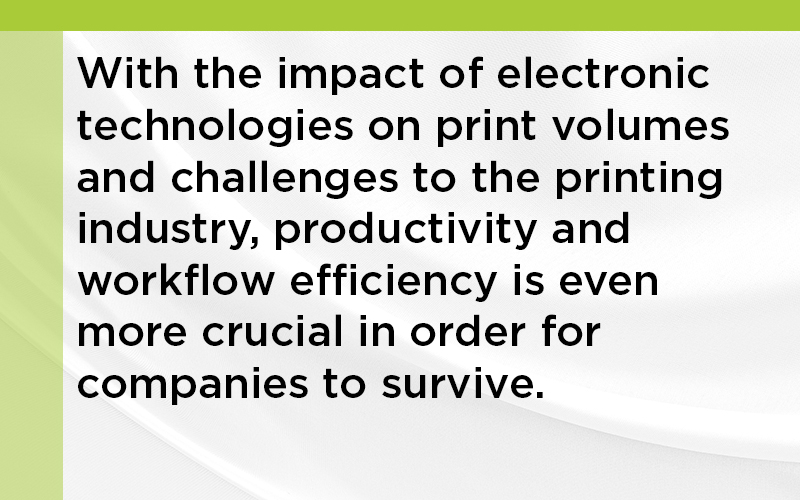
by Si Nguyen, Duplo USA
How is Duplo responding to a smaller base of potential customers? Has it curtailed equipment development in any way?
When Xerox introduced the first iGen model, we realized big changes were coming to the printing industry. Fortunately, at that time, Duplo had already begun developing its finishing line to accommodate the future needs of the industry, which are for shorter runs, faster turnaround times and on demand digital print finishing. While print volumes are decreasing, print is not going away. Focus now is more on value-added finishing, and Duplo digital color finishers have fortunately fit the needs of these trends. While the number of commercial printers has decreased dramatically these past few years, we have interestingly seen an increase in companies from different sectors that are bringing their printing in-house. Much of this trend can be attributed to the more affordable costs of digital printing, along with more user-friendly and automated equipment for less experienced operators.
Why is automation so important with the current state of the print industry?
With the impact of electronic technologies on print volumes and challenges to the printing industry, productivity and workflow efficiency is even more crucial in order for companies to survive. Highly automated equipment increases productivity with shorter set-up times and changeovers, requires less manual labor and shortens turnaround times, thus increasing a company’s bottom line. With more affordable digital printing solutions and increased finishing equipment automation, companies are increasingly finding it easier and more profitable to bring their printing in-house. Highly automated and user-friendly finishing equipment requires minimal operator experience and enables businesses to finish jobs more quickly and profitably.
With “threats from electronic technology alternatives” growing, what has Duplo done to position itself – and its customers – for shrinking print volumes?
Electronic technologies have definitely impacted print, yet finishing opportunities still exist in areas such as high-quality, personalized applications. Our wide range of finishers (such as slitter/cutter/creasers, die cutters and UV coaters) add extra value to print and finish a wide range of specialty applications, such as VDP direct mailers, which integrate well into cross-media marketing campaigns.
What advice do you have for binderies as they evaluate business models and equipment options in the next few years?
One suggestion we can offer to binderies is to always consider automation when researching equipment. Look for devices that can offer more than one function. Compact devices with multiple functionalities can be operated in smaller spaces by a single operator and would be a better solution versus running several separate devices. Searching for equipment that produces less waste and offers higher productivity also is recommended. In addition, consider connecting the finishing device to the press. Automation is not just for changing paper sizes. For Duplo, automation also means being able to integrate with a printing device either via JDF or barcodes in a near-line capacity. Automation in today’s business model needs to be at an entirely different level. Binderies have to be able to connect the entire print production, from prepress to postpress, without any touch points and produce jobs automatically.
Thank you to Si Nguyen, Duplo USA, for responding to these questions. Learn more about Duplo’s offerings at www.duplousa.com.
Related Story
- Sizing Up Postpress: Impact of Electronic Technologies on Postpress Manufacturers
NPES provides insight into the challenges facing postpress equipment manufacturers.

